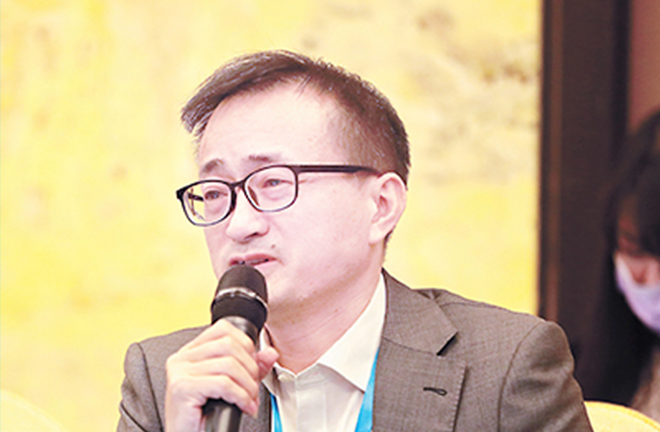Basically modernizing the socialist economy

Liu Yuanchun is vice president of Renmin University of China.
The Fifth Plenary Session of the 19th CPC Central Committee has made clear the long-term goal of basically realizing socialist modernization by 2035. Economically, the realization of major economic objectives reflects the preliminarily realization of socialist modernization.
Innovative China
The first objective is to join the world’s top ranks of innovative countries by 2035. If the top ranks of innovative countries are defined as the top ten countries in terms of the Global Innovation Index, China has to enhance its R&D intensity from 2.2% in 2020 to 3.34% in 2035. Calculated at constant prices of 2020, the total R&D scale will amount to 7.003 trillion yuan in 2035, which requires an annual increase of 8.03% in R&D in the upcoming 15 years. The rate is not high. In the previous 15 years, China’s R&D grew at an average annual rate of 17.7%.
In 2035, China’s GDP will reach 206 trillion yuan, 1.02 times that of the US’s economic aggregate in 2020. Based on the R&D intensity of the US, China will have to increase its R&D intensity by about 2.8% annually in order to achieve the desired economic aggregate.
This intensity necessitates a per capita GDP growth of 4.3%.
Improving living standards
When it comes to the second economic objective, the per capita GDP should reach the levels of moderately developed countries. If the target of China’s per capita GDP is 48,000 yuan, the average level of developed countries defined by the IMF, in the coming 15 years, the growth should be 4.36 times on the assumption that those developed nations register no growth, so its per capita GDP must grow at an average annual rate of 10.3%. If developed nations grow at an average rate of 2.5% in the future, the annual growth of China’s per capita GDP must attain 13.1% on average.
If Spain is set as the target, whose per capita GDP stands at $28,000, the median of the 61 high-income countries, China needs to grow 2.55 times in the upcoming 15 years, with an average annual rate of 6.43%, supposing that Spain records zero growth. If Spain, the median developed country, grows 2.5% annually on average in the future, China’s average annual growth must reach 9.09% in the next 15 years.
Surely, these calculations don’t take into account renminbi appreciation in the process of China’s high economic growth. Suppose the renminbi appreciates by about 2% on average annually, it will take China an average annual growth rate of about 4.7% to surpass Portugal and 7% to surpass Spain.
If it can maintain an actual GDP growth of 4.8% annually on average between 2020 and 2035, China will fulfill the historical mission of sidestepping the middle-income trap around 2026 if it counts when China goes 20% higher than the threshold value of high-income countries. According to calculations by the low-to-high trend, the average annual growth needs to reach 5.5-6% from 2020 to 2025. However, judging from the potential GDP growth in light of current trends, the average annual growth rate will barely reach 4.36% during 2020-2035. Even based on an optimistic assumption, there is little likelihood of meeting the requirement of 4.8%.
Unleashing new dividends
To reach the goal of basically realizing modernization by 2035, efforts must be made to adjust strategies concerning how China can advance technological innovation to unleash new technology dividends; how to promote reform to create the second round of institutional dividends; how to build up its talent and educational strength to accelerate the translation of demographic dividends into dividends of human resources; and how to establish cooperation platforms and foster new competitiveness amid profound changes unseen in a century, in order to break the bottleneck in reconstructing the value chain and division of labor chain, and help release a new round of dividends from globalization.
To tackle these problems, new strategies must be launched to adjust, reconstruct, and deepen past strategies by leveraging the new development paradigm of dual circulation.
This is an excerpt from his speech at the forum.
Edited by ZHAO YUAN
